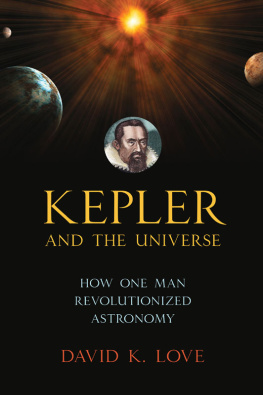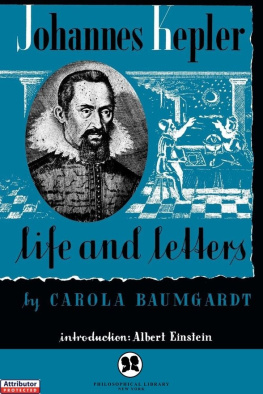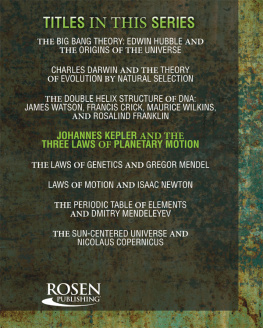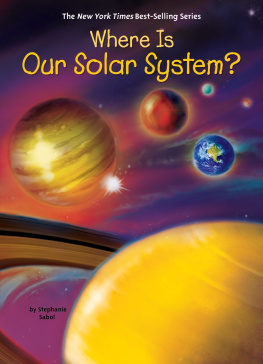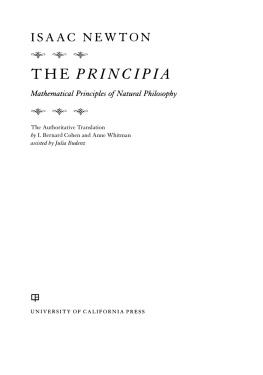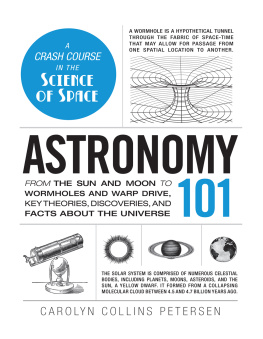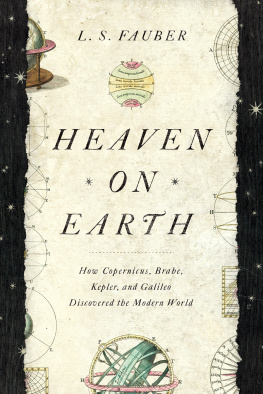
I am grateful to a number of publishers and authors for allowing me to use quotations from their books, as follows:
William H. Donahue: Translations of Astronomia Nova and Optics.
Dover: Kepler, by Max Caspar.
Philosophical Library: Johannes Kepler: Life and Letters, by Carola Baumgardt.
University of Chicago Press: Translation of The Sidereal Messenger, by Albert Van Helden.
Oxford University Press: Translation of Kepler's Preface to the Rudolphine Tables, by Owen Gingerich and William Walderman.
Cambridge University Press: Translation of A Defence of Tycho against Ursus, by N. Jardine.
and to the following for allowing me to reproduce diagrams, as follows:
Euratlas: Three maps of parts of Europe as they were in 1600.
Bayerische Akademie of Science: Kepler's model of the Solar System, his diagram of Great Conjunctions, his eclipse viewing device, his table of world history, and his frontispiece to the Rudolphine Tables.
Syndics of Cambridge University Library: An illustration from the Nuremberg Chronicle.
SkyMap Pro software: Two star maps.
I am also very grateful to Prometheus Books for having informed me that no permissions were required for the various quotations I have used from some of their books.
All quotations are set either in quotation marks or as indented text and are referenced with endnotes. All diagrams are similarly referenced.
All photographs, unless otherwise noted, were taken by me, and I own the copyrights.
To the best of my knowledge, I have obtained all necessary permissions for the contents of this book. If there are any errors or omissions, Prometheus Books will be pleased to insert the appropriate acknowledgment in any subsequent printing of this book.

December 27, 1571: Birth in Weil der Stadt.
Late 1575: Family move to Leonberg.
1578: Move to Ellmendingen.
1579: Move back to Leonberg.
October 1584: Boarder at Adelberg seminary.
November 1586: Boarder at Maulbronn seminary.
October 1589: Student at Tbingen University.
March 1594: Leaves Tbingen.
April 1594: Arrives in Graz to become a schoolmaster.
Early 1596: Returns to Wrttemberg (to visit grandfathers and discuss book).
July 1596: Returns to Graz.
September 1598: One-month exile from Graz.
January 1600: Leaves Graz for Prague (meeting with Tycho Brahe).
June 1600: Returns to Graz (via Vienna).
September 1600: Leaves Graz for Prague with wife and stepdaughter.
April 1601: Returns to Graz (to settle father-in-law's affairs).
August 1601: Returns to Prague (Tycho dies October 1601).
April 1612: Leaves Prague for Linz.
October 1617: Travels to Wrttemberg (following his mother).
December 1617: Returns to Linz.
162021: Linz/Wrttemberg (witch trial).
November 1626: Departure from Linz with family. Family found lodgings in Regensburg. Kepler arrives in Ulm.
November 1627: Returns to family in Regensburg.
December 1627: Visits Prague to see Ferdinand II.
May 1628: Leaves Prague for Regensburg (then Linz briefly).
July 1628: Arrives in Sagan.
October 1630: Leaves Sagan.
November 1630: Arrival in Regensburg, and death on November 15.

There are two main sources of primary historical documents on Kepler. They are: Omnia Opera, published by Heyder & Zimmer (Frankfurt) and edited by Christian Frisch; and Gesammelte Werke, published by C. H. Beck (Munich) and originally edited by Walther von Dyck and Max Caspar. Both sources were issued in several volumes over periods of several years or decades.
Omnia Opera (18581871) is the earlier work and is not particularly well arranged, but it has the merit of being easily available on the Internet. Gesammelte Werke (19372012) is more comprehensive and much better structured, but it is expensive and difficult to get hold of in Britain and has only slowly been appearing on the Internet. Most of the text in both sources is in Latin. A small amount is in medieval German. Most of Kepler's key works have now been translated into English.
All sources are listed in the bibliography. However, the most important primary source documents and translations (mostly of works contained within the above volumes) are as follows:
Carola Baumgardt, Johannes Kepler: Life and Letters (New York: Philosophical Library, 1951).
Max Caspar, Kepler (New York: Dover, 1993).
Nicolaus Copernicus, On the Revolutions of Heavenly Spheres, trans. Charles Glenn Wallis (Amherst, NY: Prometheus Books, 1995).
J. L. E. Dreyer, A History of Astronomy from Thales to Kepler (Mineola, NY: Dover, 1953).
J. L. E. Dreyer, Tycho Brahe: A Picture of Scientific Life & Work in the Sixteenth Century (Edinburgh: Black, 1890).
Galileo, The Sidereal Messenger, trans. Albert Van Helden (Chicago: University of Chicago Press, 1989).
Nicholas Jardine, The Birth of History and Philosophy of Science (Cambridge: Cambridge University Press, 2009). The book contains Jardine's translation of Kepler's A Defence of Tycho against Ursus.
Kepler, Astronomia Nova (The New Astronomy), trans. William H. Donahue (Cambridge: Cambridge University Press, 1992).
Kepler, Epitome of Copernican Astronomy, trans. Charles Glenn Wallis (Amherst, NY: Prometheus Books, 1995).
Kepler, The Harmony of the World, trans. Charles Glenn Wallis (Amherst, NY: Prometheus Books, 1995).
Kepler, Optics, trans. William H. Donahue (Santa Fe, NM: Green Lion Press, 2000).
Kepler, Preface to the Rudolphine Tables. Translated by Owen Gingerich and William Walderman (London: Quarterly Journal of the Royal Astronomical Society 13, 1972).
Anyone wishing to find out more about Galileo, Kepler's fellow Copernican, is recommended to read David Wootton's Galileo: Watcher of the Skies (New Haven, CT, and London: Yale University Press, 2010).

The Holy Roman Emperor Rudolph II played a significant role in Kepler's life. In Kepler's time, and for centuries afterward, the spellings both of Rudolph and of the Rudolphine Tables named after him used ph. In recent decades, however, many authors have chosen to spell his name as Rudolf. In this book, I have decided to use the spelling that Kepler himself would have recognized. For the same reason, I am using Alphonso rather than Alfonso.

Alter, Dinsmore. Pictorial Guide to the Moon. London: Arthur Barker, 1964.
Armitage, Angus. The World of Copernicus. Dublin: Mentor, 1951.
Baumgardt, Carola. Johannes Kepler: Life and Letters. New York: Philosophical Library, 1951.
Beer, Arthur, and Peter Beer, eds. Proceedings of Conferences Held in Honor of Kepler. Oxford: Pergamon, 1975.
Berry, Arthur. A Short History of Astronomy. New York: Dover, 1961.
Bronowski, Jacob. The Ascent of Man
Next page
